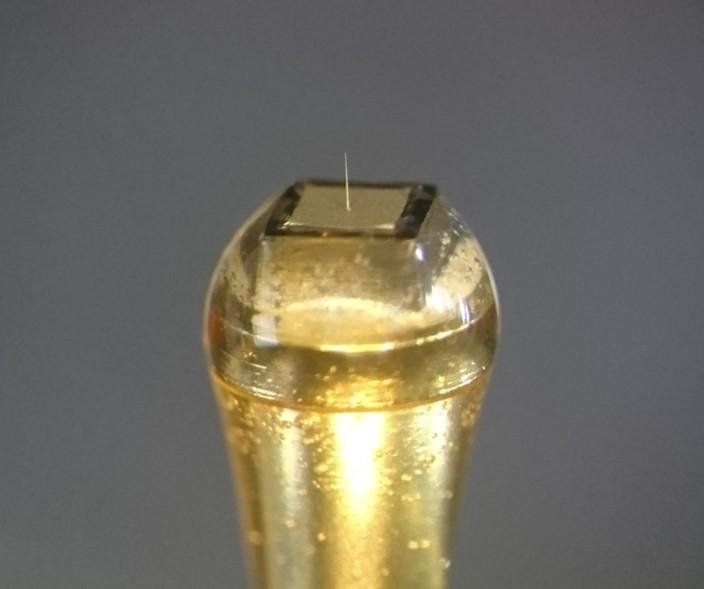A research team in the Department of Electrical and Electronic Information Engineering and the Electronics-Inspired Interdisciplinary Research Institute (EIIRIS) at Toyohashi University of Technology developed 5-μm-diameter needle-electrodes on 1 mm × 1 mm block modules. This tiny needle may help solve the mysteries of the brain and facilitate the development of a brain-machine interface. The research results were reported in Scientific Reports on Oct 25, 2016.
The neuron networks in the human brain are extremely complex. Microfabricated silicon needle-electrode devices were expected to be an innovation that would be able to record and analyze the electrical activities of the microscale neuronal circuits in the brain.
However, smaller needle technologies (e.g., needle diameter 10 μm) are necessary to reduce damage to brain tissue. In addition to the needle geometry, the device substrate should be minimized not only to reduce the total amount of damage to tissue but also to enhance the accessibility of the electrode in the brain. Thus, these electrode technologies will realize new experimental neurophysiological concepts.
